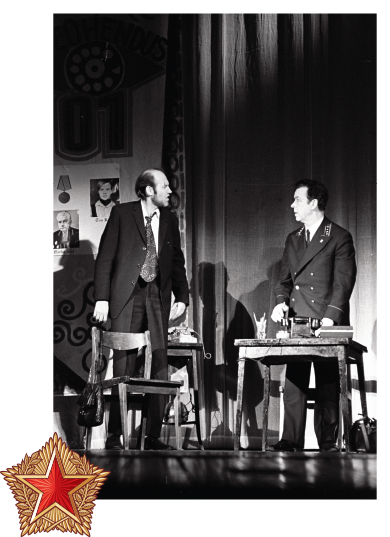CONSTRUCTION ON THE BAIKAL-AMUR MAINLINE. 1976. (NATIONAL ARCHIVE)
IMMIGRANTS OFTEN MADE UP THE WORKFORCE ON LARGER JOB SITES. BUILDERS AT THE WOOD PARTICLE BOARD FACTORY IN PÜSSI (FROM LEFT) V. ZMITRICHENKO, V. CHELMODEYEV, N. ANTSSEN, V. ZAVYALOV AND M. SASS. OCTOBER 1981. (NATIONAL ARCHIVE)
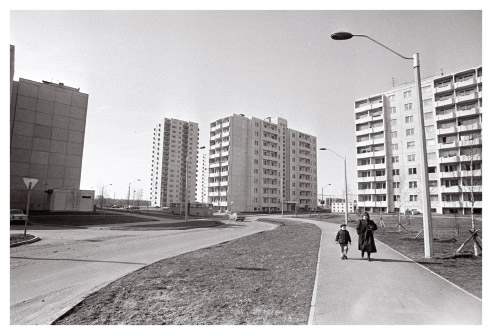
IMMIGRANTS WERE GIVEN FIRST CHOICE OF APARTMENTS WITH ALL AMENITIES. RESIDENCE FOR WAR VETERANS AND WORKERS IN LASNAMÄE DISTRICT. APRILL 1986. (NATIONAL ARCHIVE)
AN OFFICER WITH THE PARTY COMMITTEE AT THE H. PÖÖGELMANN ELECTRONICS PLANT, IDENTIFIED AS V. JUDINA, TALKS TO THE COMPANY’S PROPAGANDISTS. 1981. (NATIONAL ARCHIVE)
The Soviet Union was also known for anti-Semitism. A professor at the University of Tartu, the internationally best-known semiotician Yuri Lotman, experienced it. He ran into repeated difficulty publishing his work. Even as late as in 1987, Lotman had his candidacy for an academic position rejected.
The Soviet Constitution of 1977 called for a new stage in human development. Homo sovieticus was supposed to be a committed communist, above all, with an appreciation for Marxist-Leninist convictions, loyalty to the party and an ethic of striving unselfishly and diligently.
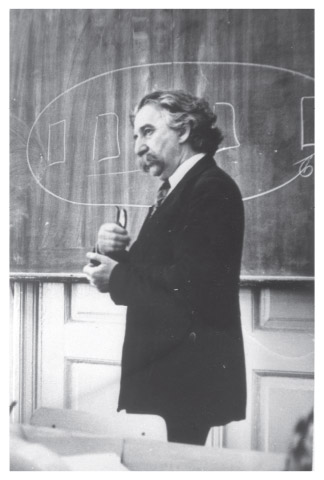
A PROFESSOR WITH THE SOVIET-ERA UNIVERSITY OF TARTU’S RUSSIAN LANGUAGE DEPARTMENT, THE INTERNATIONALLY RECOGNIZED SEMIOTICIAN J. LOTMAN, WHO WAS PERSECUTED IN LENINGRAD AND WAS ABLE TO CONTINUE HIS WORK IN ESTONIA, SEEN AT A LECTURE. 16 MAY 1979.
(NATIONAL ARCHIVE)
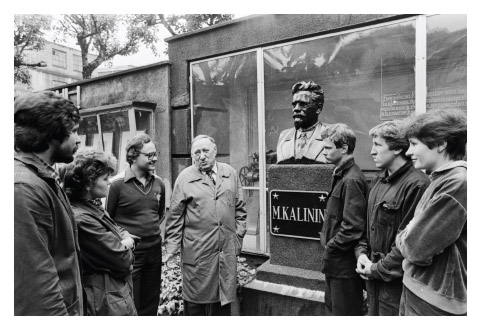
“DEVELOPMENT OF THE NEW SOVIET MAN IS PROGRESSING AT FULL SPEED.” A VETERAN OF THE PARTY AND SOCIALIST LABOUR, G. LARTSEV TELLS COMMUNIST YOUTH AT THE KALININN ELECTRONICS PLANT IN TALLINN OF HIS MEETING WITH THE PLANT’S NAMESAKE. JUNE 1983. (NATIONAL ARCHIVE)
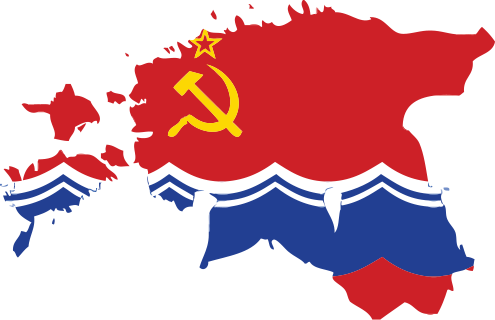
There could be no other parties besides the Communist Party. The Communist Party’s children’s organizations were the Little Octobrists and Young Pioneers. It was semi-compulsory to belong to these organizations. For older youths, there was the Komsomol – the All-Soviet Leninist Communist Youth Association. All of these organizations served one main goal – to be a breeding ground for future communists.
All other mass organizations were subordinate to state control and did what the state dictated. Trade unions provided leisure activities for workers, dealt with communist education and doling out “deficit” goods, not what they were originally intended to do – protecting worker interests. A mass organization set up in 1951 to strengthen the Soviet Union’s defensive capacity was DOSAAF, the Volunteer Society for Cooperation with the Army, Aviation, and Navy. Although it was formally only voluntary, membership of the organization was in fact obligatory or semi-obligatory depending on the educational institution or workplace.
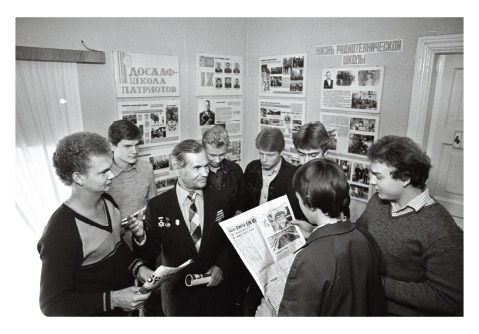
“DOSAAF – SCHOOL OF PATRIOTS” READS THE WRITING ON THE WALL. RETIRED LIEUTENANT COLONEL I. GRITSENKO TALKING WITH DOSAAF’S TALLINN RADIO TECHNICIAN SCHOOL CADETS. SEPTEMBER 1983.
(NATIONAL ARCHIVE)
THE SOVIET REGIME BELIEVED THAT PARTY LOYALISTS SHOULD EVEN RUN ORGANIZATIONS SUCH AS THE HUNTERS SOCIETY. PICTURED: THE DIRECTOR OF THE HUNTERS SOCIETY’S TALLINN CLUB, THE FORMER ESTONIAN SSR MINISTER OF THE INTERIOR, M. KRASSMAN. 1970. (NATIONAL ARCHIVE)
A GROUP OF AGITATORS IN THE TALLINN VOLUNTEER FIREFIGHTING ASSOCIATION SPEAKING AT A REVIEW. JANUARY 1974. (NATIONAL ARCHIVE)
